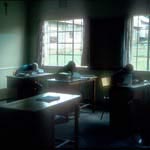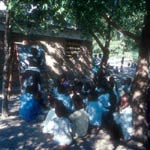
|
|
Elements of Vision
The success and the information obtained from an assessment can depend on the objects chosen. It is best to use objects which are familiar to the person being assessed. Try to make the objects interesting and ones which would be normally used. Food, playthings and money are usually good to use with children.
When assessing near vision, use objects which would normally be used close to the person. For distance vision, use objects which the person would have to find or identify from a distance.
Size
Larger objects are not always easier to see. For some people with reduced visual fields, they can only see parts of large objects.Distance
Objects are usually easier to see when they are close. Objects which are too small or have poor contrast may not be seen even when very close. Children can usually see objects held very close (10 cm or even less) to their eyes. Adults (especially when over 35 to 40 years old) cannot see objects held very close to them.Contrast
Good contrast is an important factor for people with low vision. Improving contrast can make objects or print easier to see without changing the size or distance.
Colour
Some things can be recognised by their colour even if details cannot be seen.Position
The position of an object may cause difficulty for some people. Different positions should be used to have the person look straight in front, to one side, up and down. The position of an object can make it harder to see - on, beside or under other objects.Light
People with low vision can have difficulty adapting to changes in lighting. It takes a while for vision to adjust to the change.
In a school objects used by the teachers or children can be used; books, pencils (short, long and different colours), blocks or paper. Pictures and shapes can be drawn on a board or paper.
Checkpoint: Describe at least three ways you could help a person with low vision in the classroom
|
|
| Visual Communication Unit |



